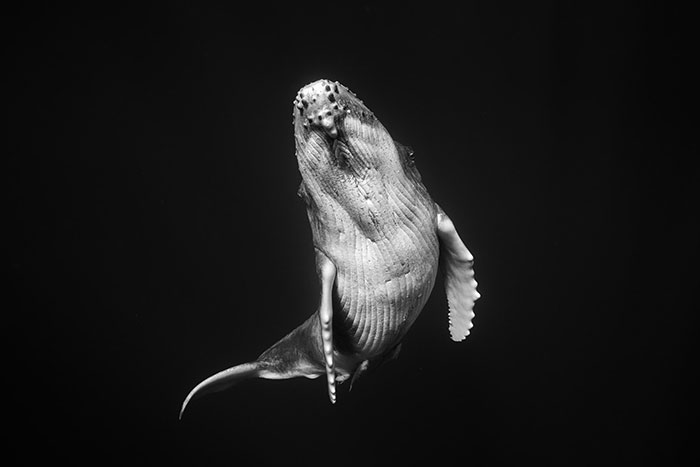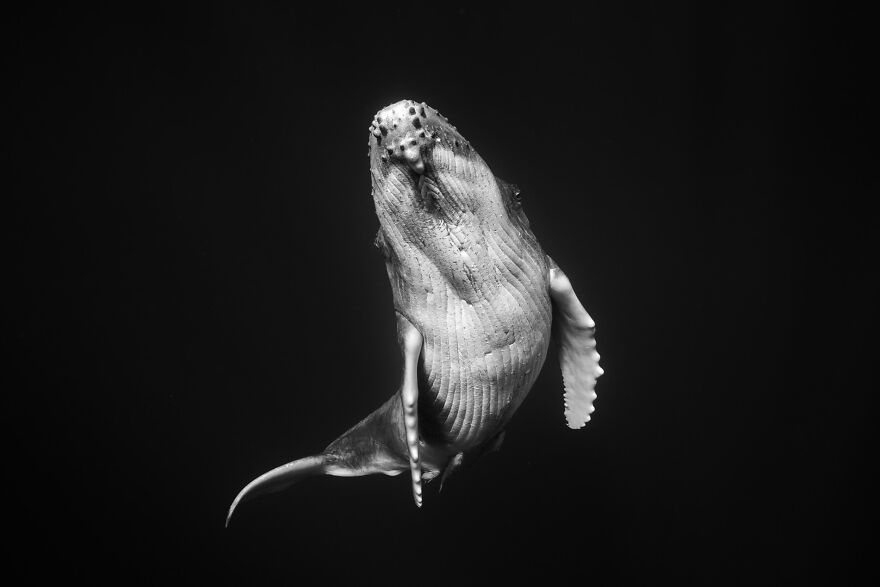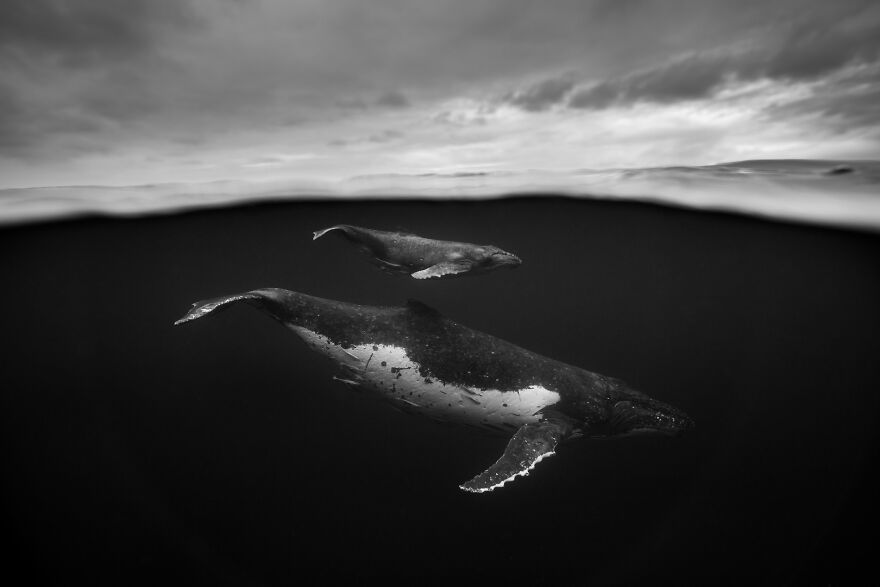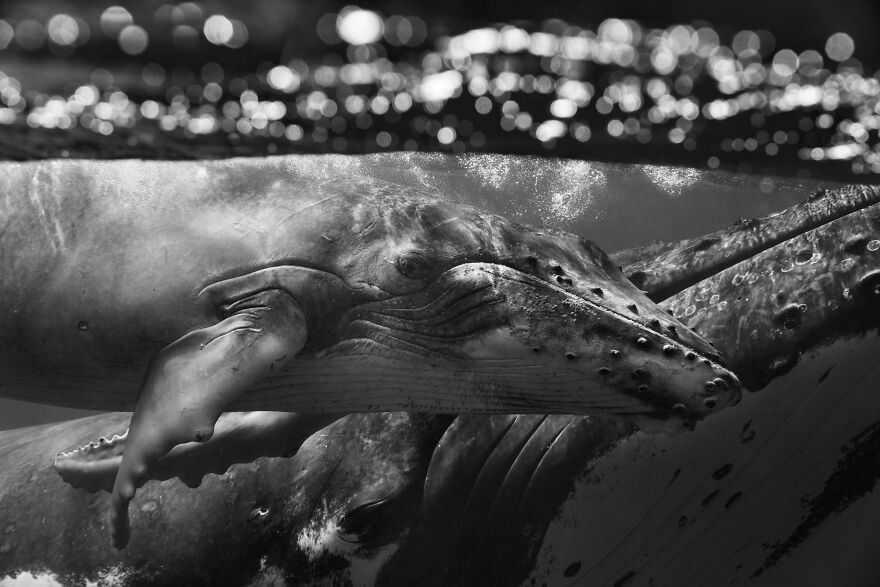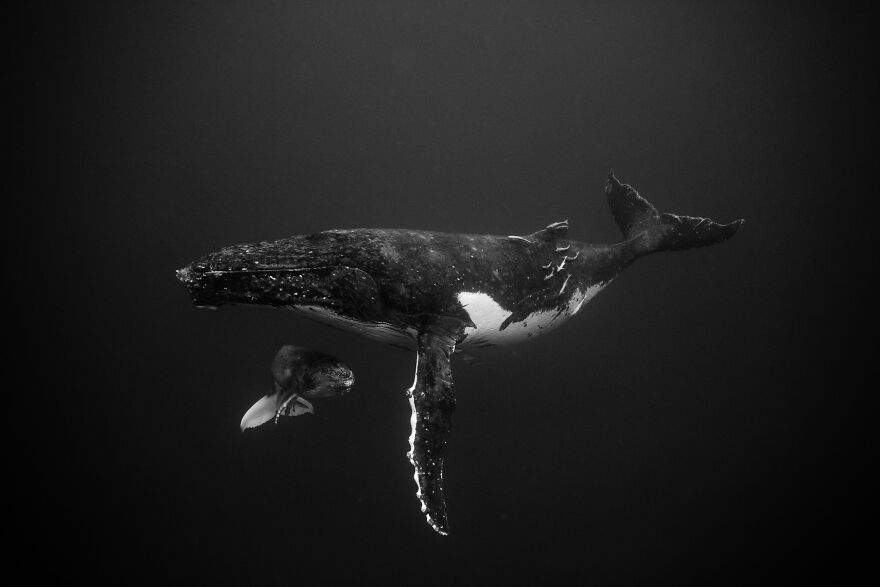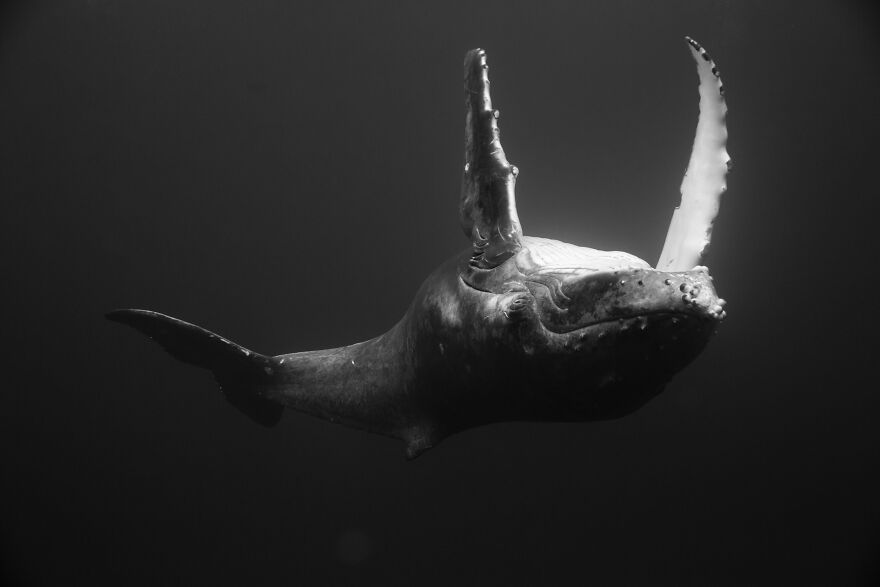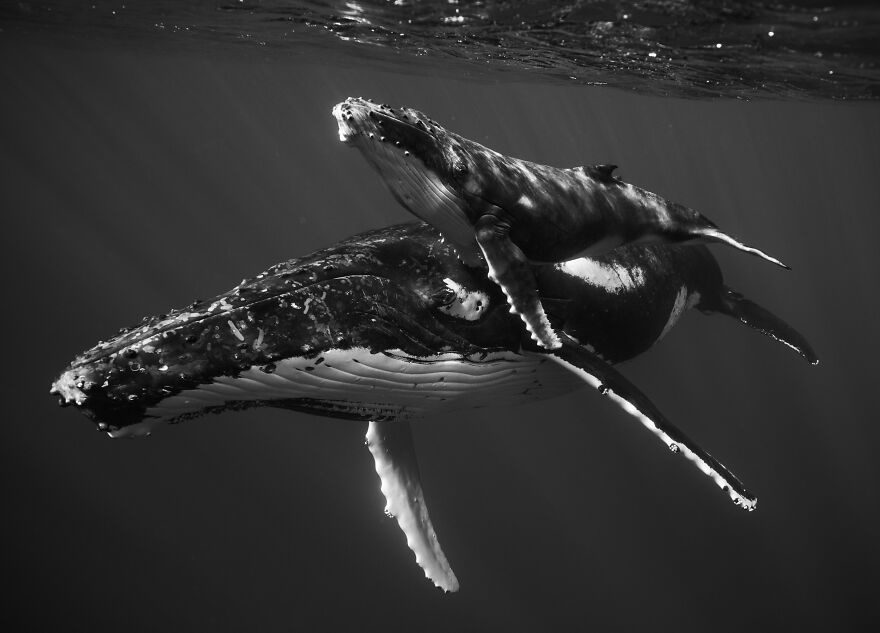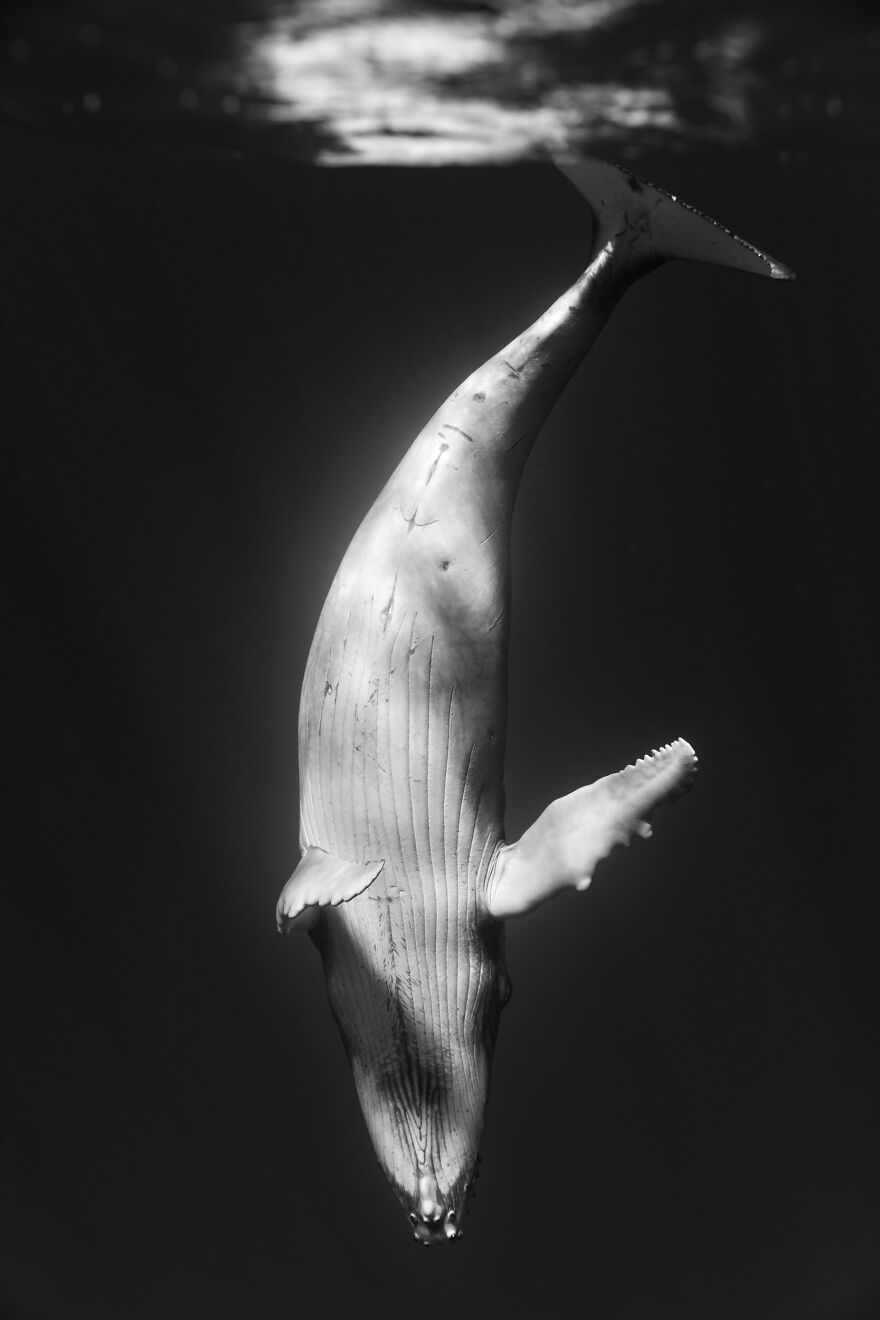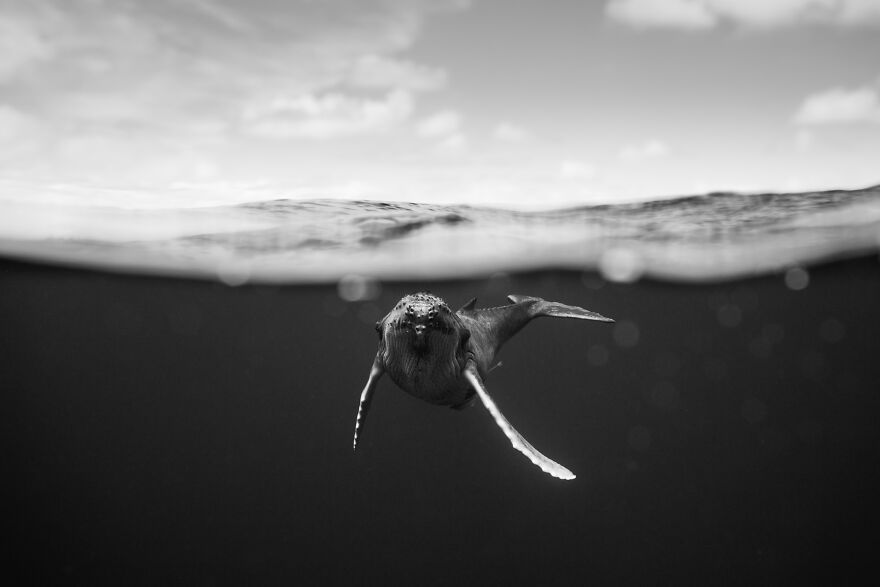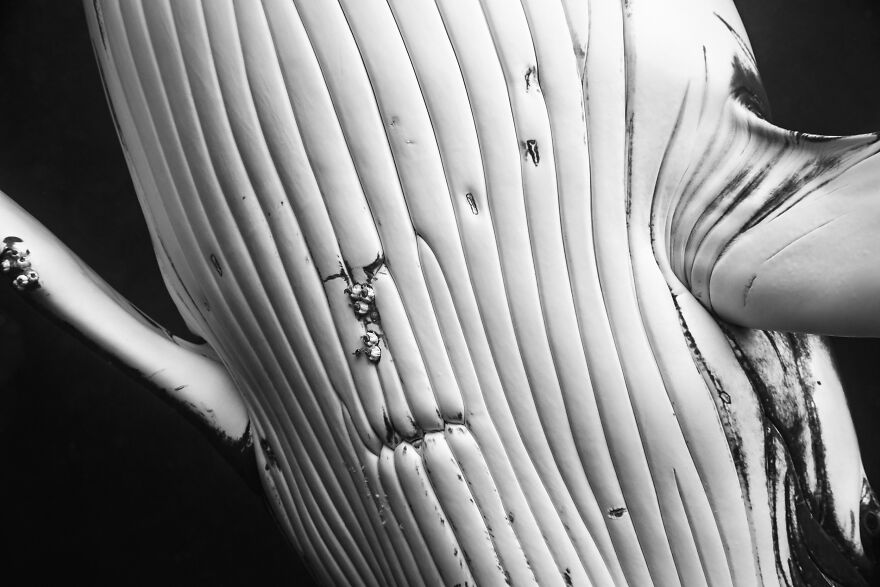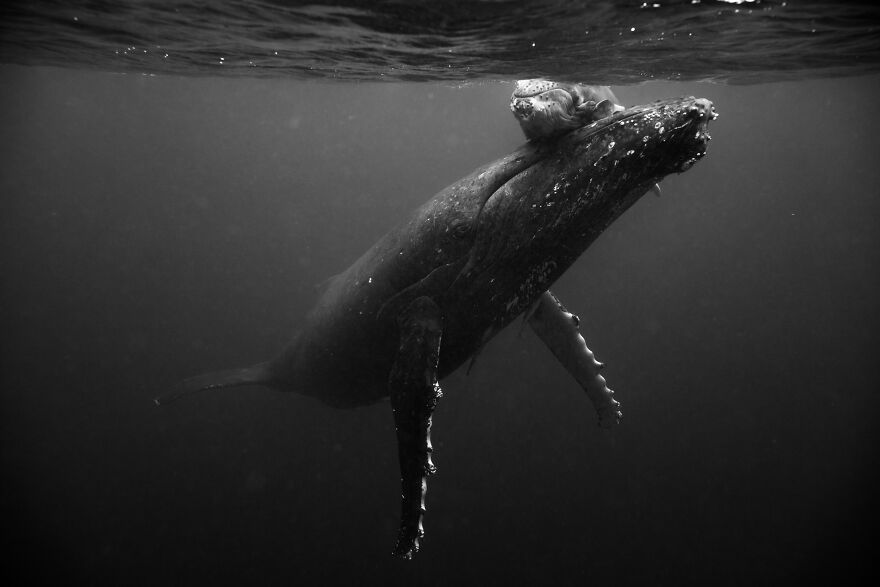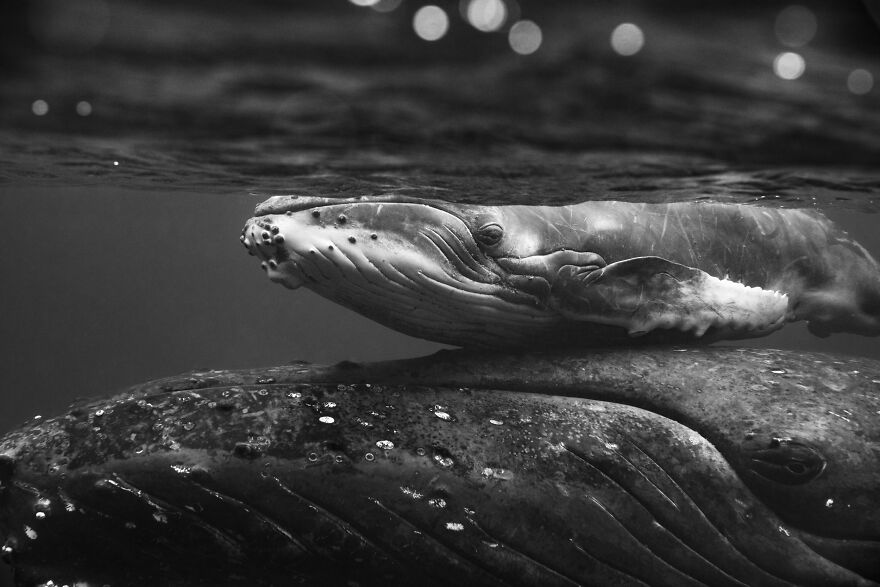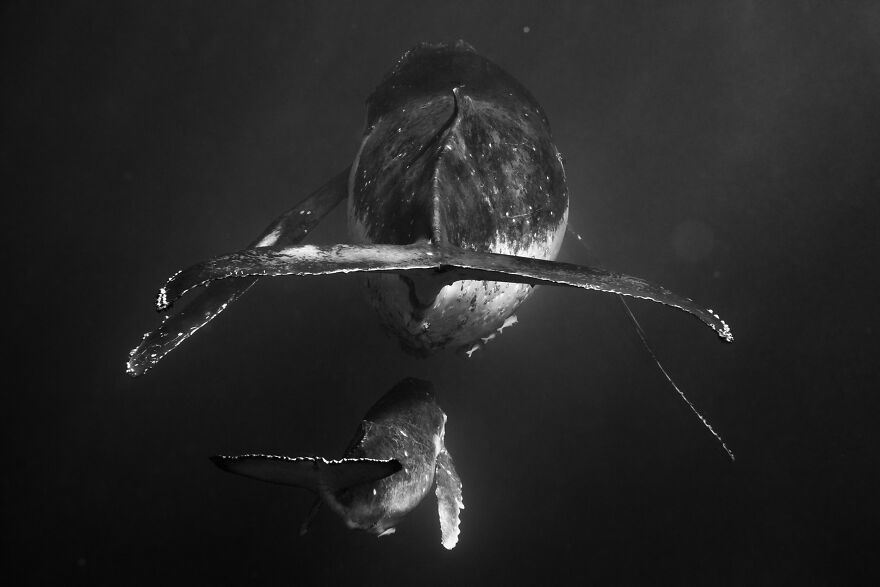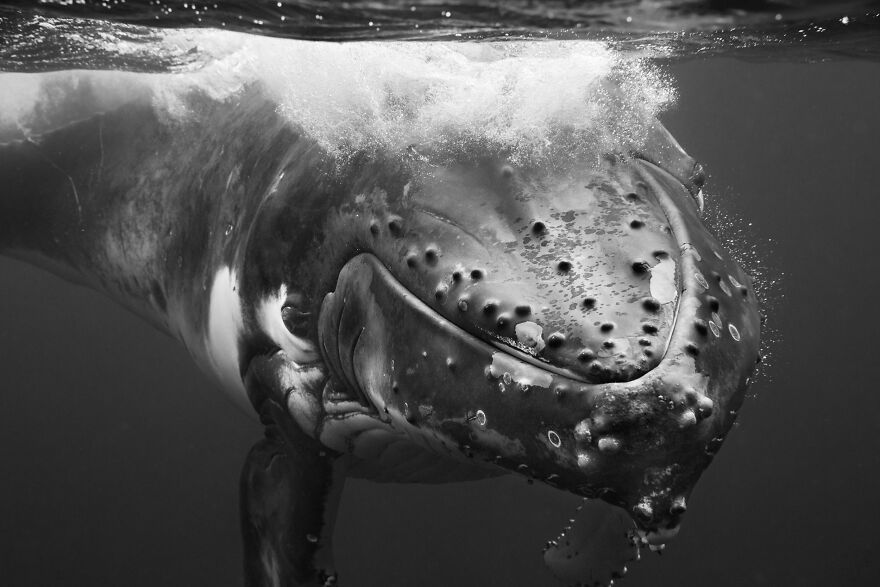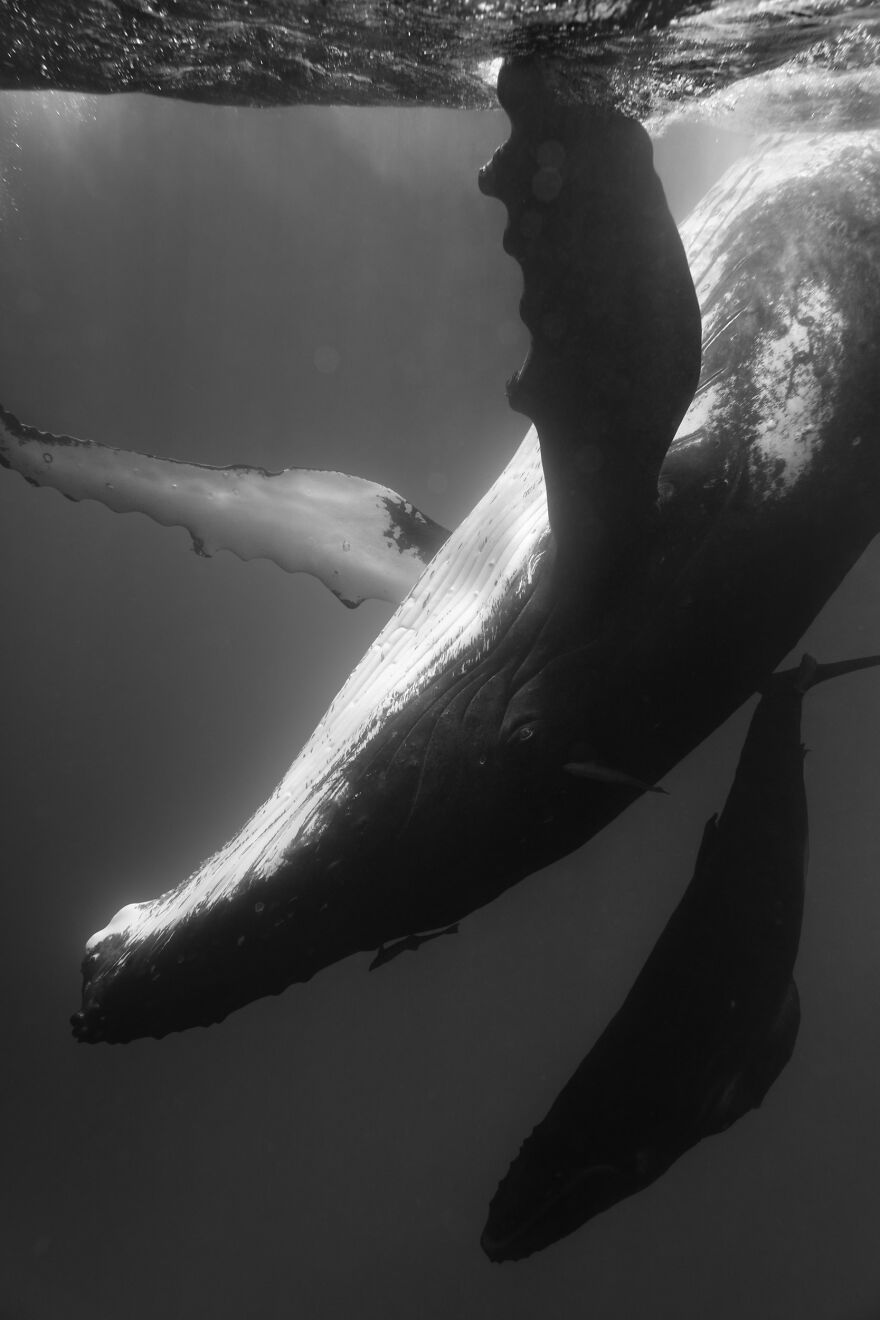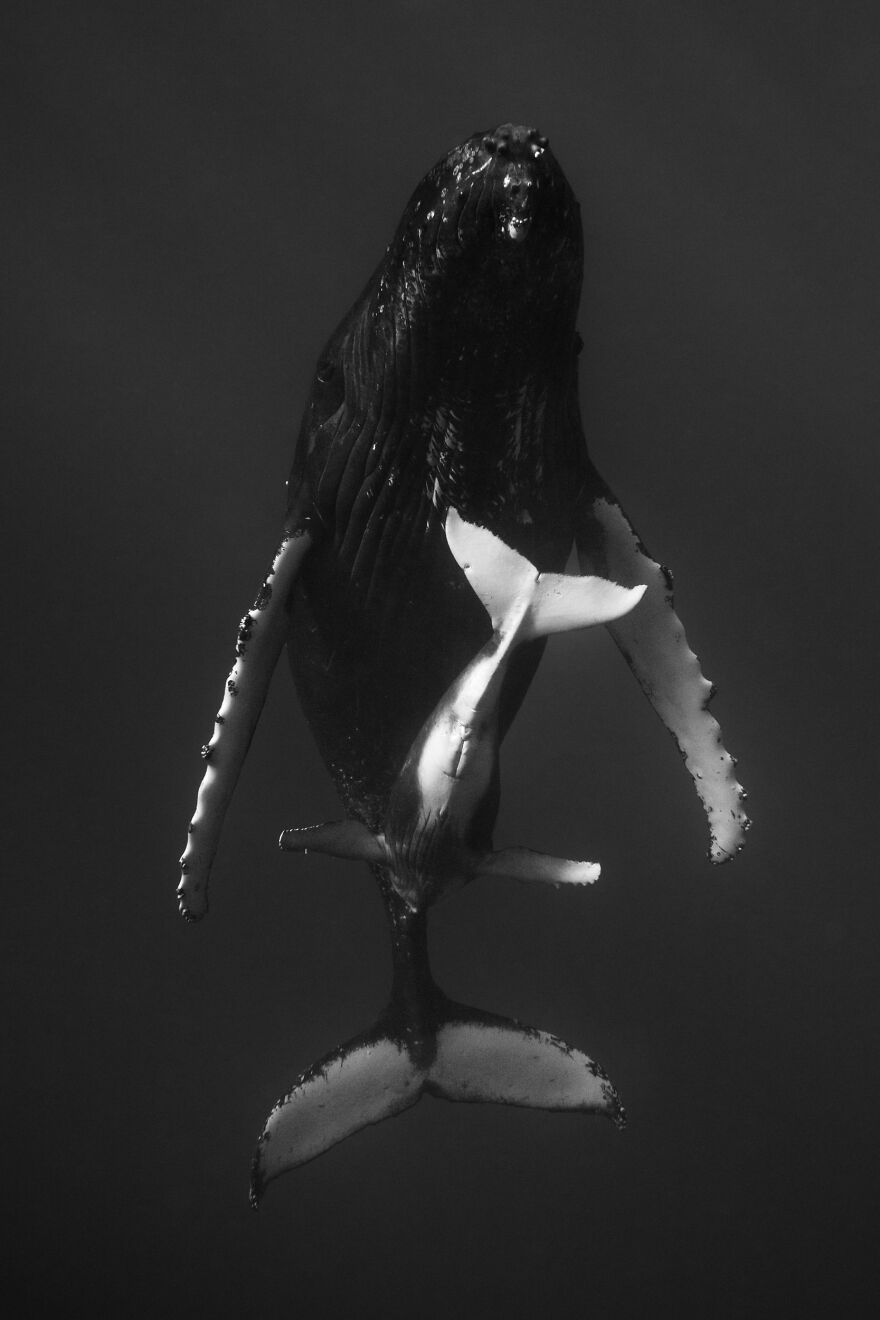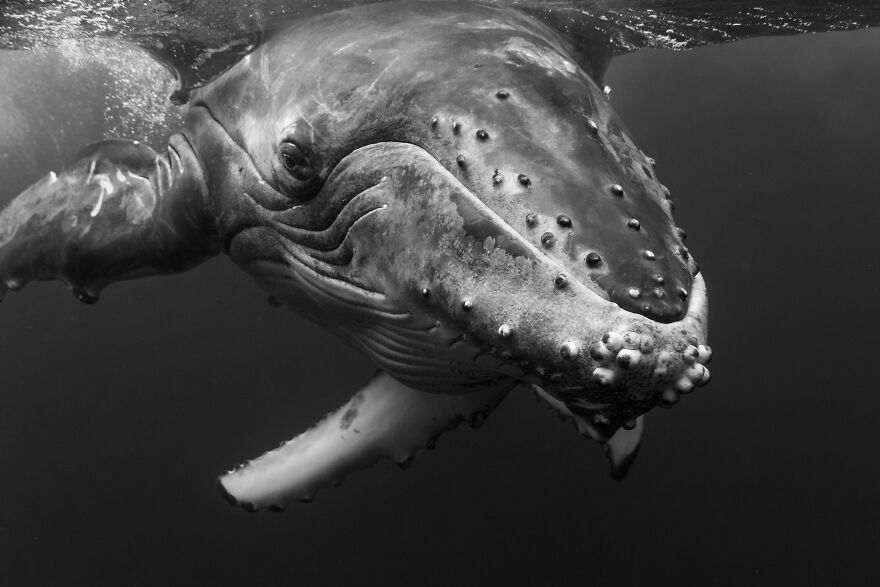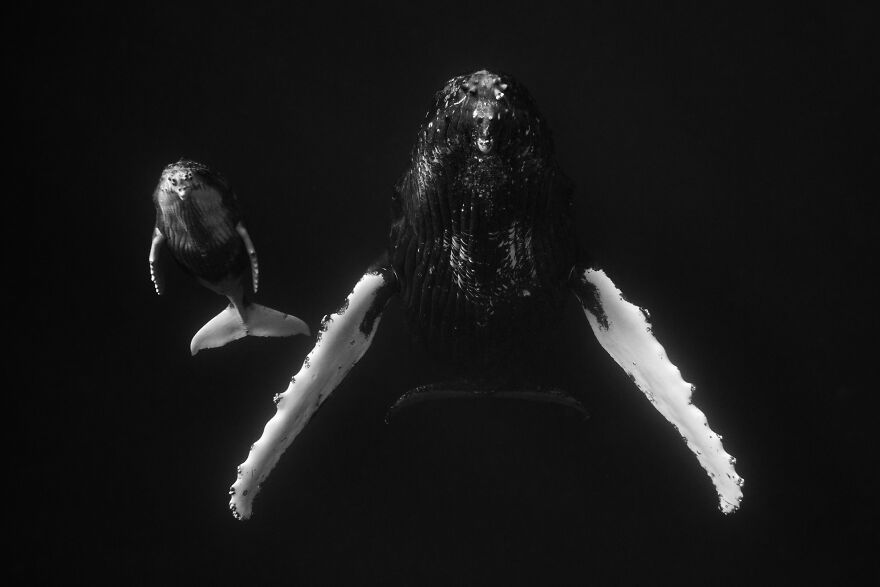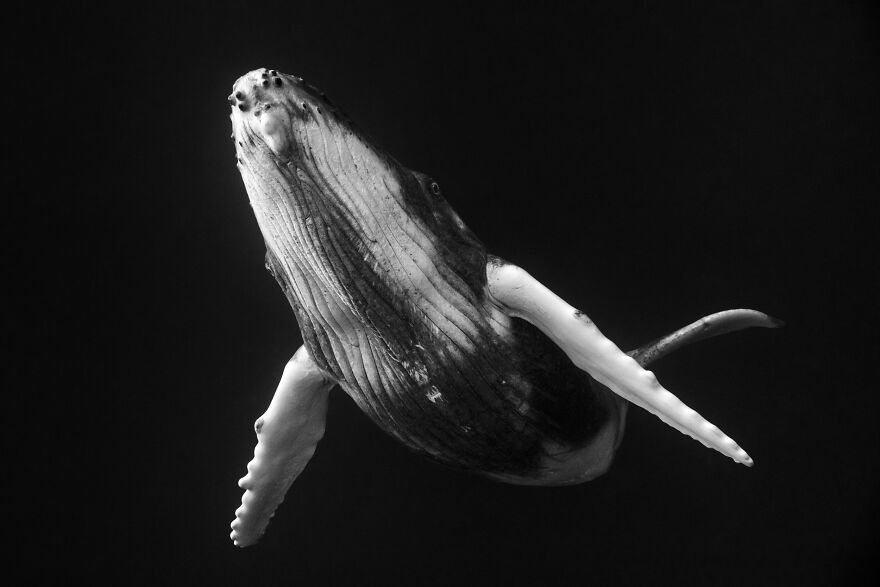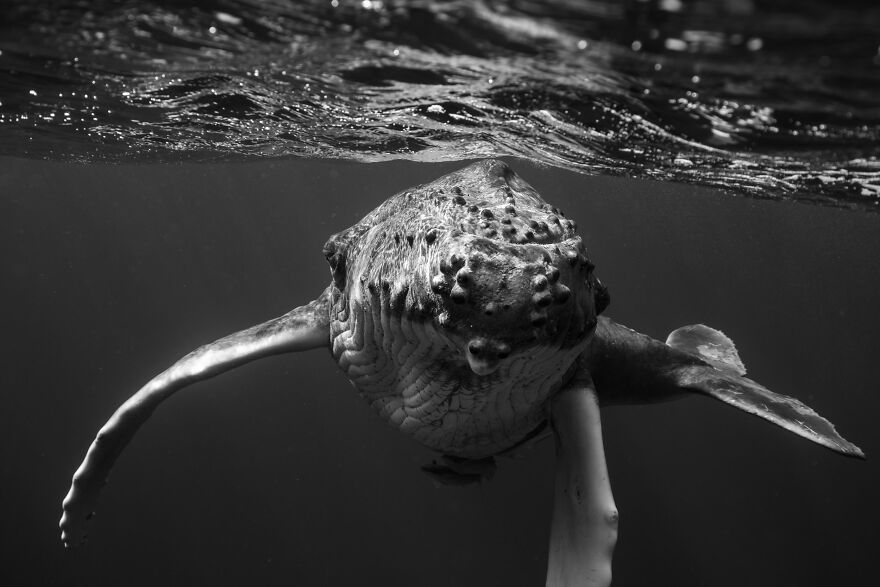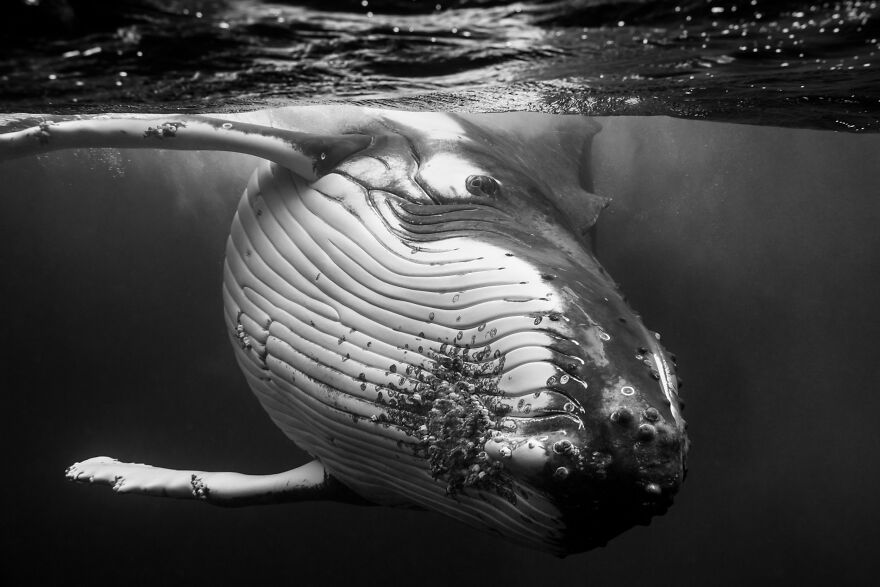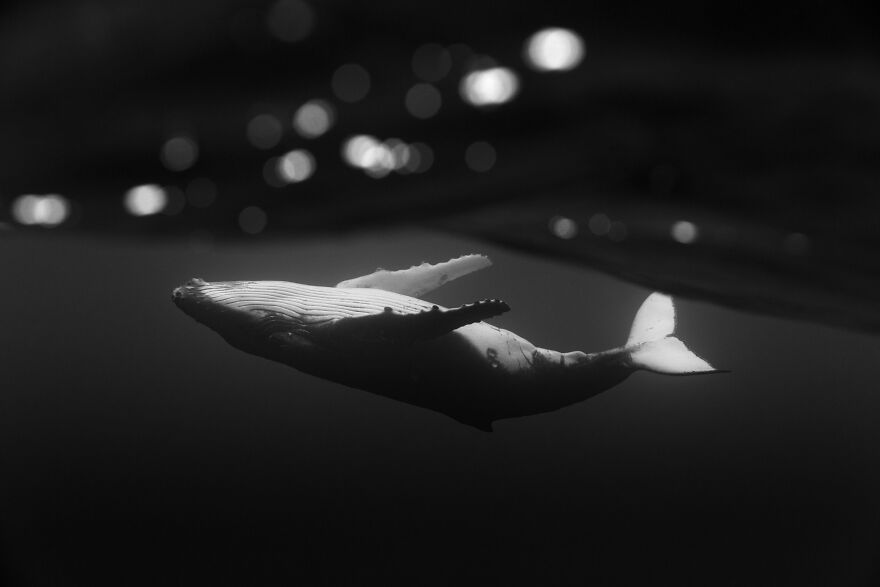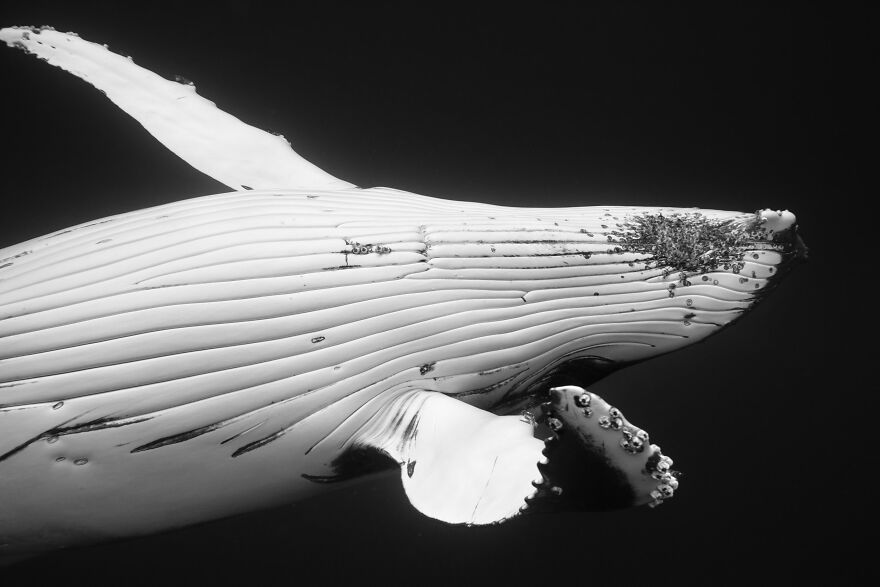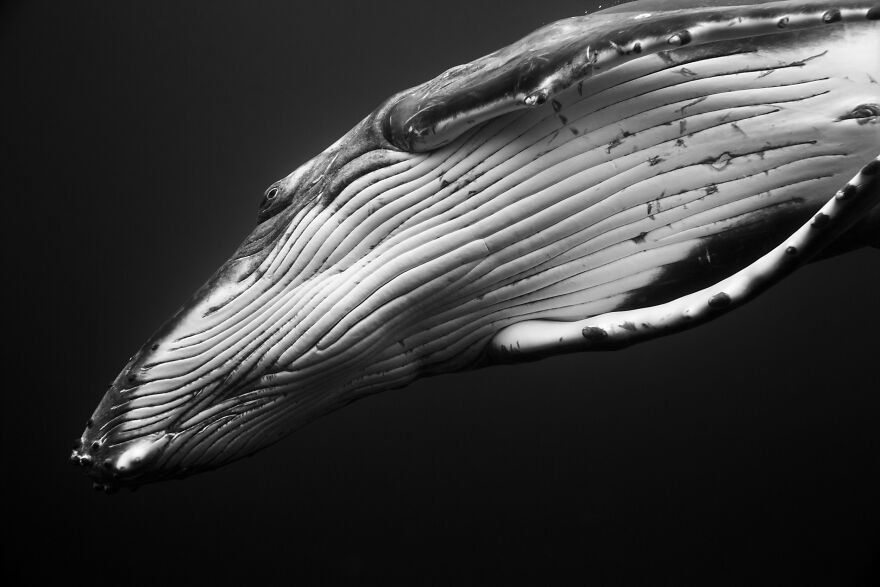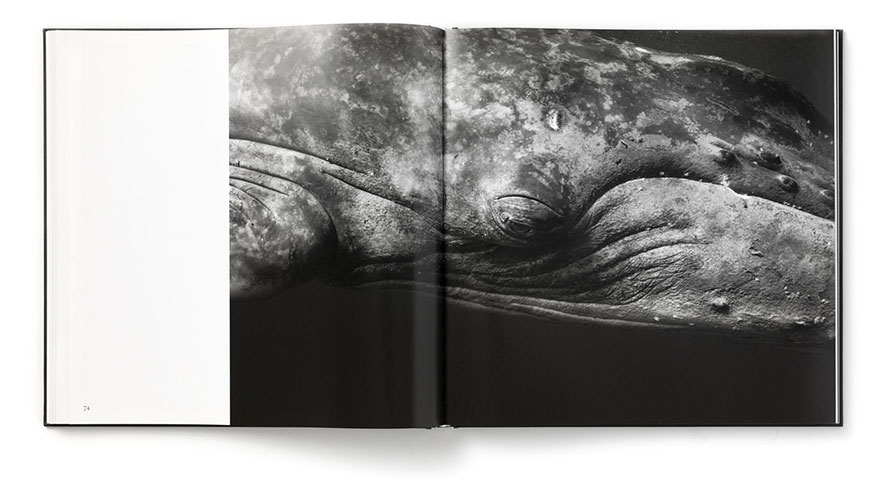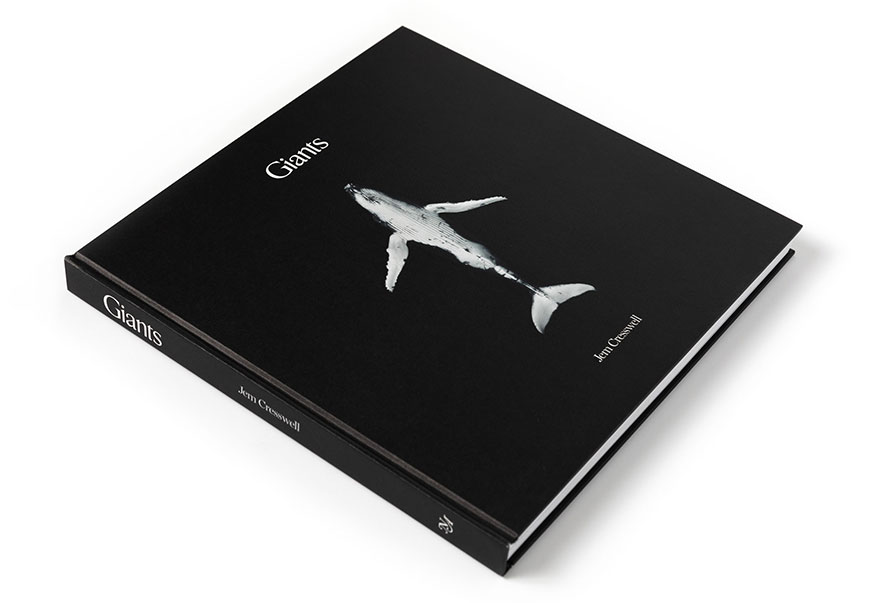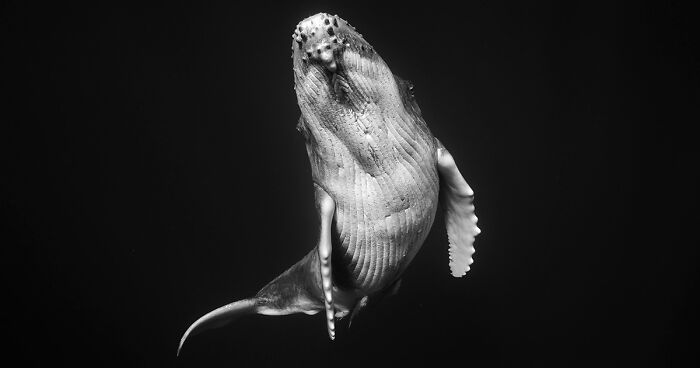
Underwater Photographer Swims With Humpback Whales And The Photos Are Ethereal (25 Pics)
To me, someone who grew up in a country with a 90-kilometer (66-mile) coastline of the Baltic sea, whales seem almost as mythical as mermaids. So when I stumbled upon Jem Cresswell's photo series Giants, I experienced a profound contradiction. On one hand, the powerful black and white images brought me closer to witnessing these majestic animals. But on the other, they reassured my belief that whales are creatures beyond my comprehension. If there's one thing I'm certain of, however, it's that Jem's photos offer an intimate glimpse into the private world of these gentle creatures.
More info: GiantsTheBook.com | JemCresswellArt.com | Instagram
This post may include affiliate links.
Cresswell has always been fascinated with humpback whales, mainly due to their gentle nature, sheer size, and the feeling of insignificance in their presence. "Every year, numerous humpback whales travel past the east coast of Australia where I live, on migration to the warmer breeding grounds of the Pacific," Jem told Bored Panda. "Every encounter with a humpback whale is unique. The possibility of what you might capture is endless, especially when you let these incredible creatures dictate the terms of the interaction."
The series Giants, however, was photographed elsewhere. On the coast of Tonga. It's a state and archipelago in Polynesia, comprised of 169 islands, of which 36 are inhabited. "Firstly, Tonga is one of the few places you can swim with the humpback whale. There have been regulations in place in Tonga since the early 1990s," Cresswell explained his location choice. "And secondly, the water clarity is so amazing and clear. The underwater trenches of the Tongan coastline are some of the deepest in the world and shooting in such deep dark blue ocean helps to simplify the image when converting to black and white, so there is no distraction, and you are drawn to the subject."
Each year, the underground photographer would head to Tonga for a few weeks during the peak of the migration. The routine Jem had created for himself sounds nothing short of idyllic: "I stayed in a little apartment, above a local family's house in Vava'u. Each morning, we would leave from the dock in front of their property at around 7:30 am and head out through the channel, around the islands to find the whales and observe them from a distance. The boat I used had an incredible licensed Tongan Guide and Captain, Sione, who has been swimming with humpback whales for many years. Sione would make all the decisions as to whether we enter the water or not. The guide has in-depth knowledge on the behavior of the whales and I have learned so much from him; his knowledge has ensured encounters far beyond what I thought I would witness."
They would only swim and snorkel with certain whales (no scuba diving was involved). Jem would always enter the water as calmly as possible, keeping his heart rate low and wait for the whales to simply go about their ways. "There are obvious signs if the whales are comfortable, and we would not approach until it was evident they were happy for us to be in the water with them. Humpback whales interact with many different marine creatures over their lifetime. Many a time, a curious whale will come over for a closer look. It's amazing to witness their conscious movements; to see their eye follow you as they move and put their pectoral fin down, to ensure they don't bump you as they pass," Cresswell recalled his incredible experience.
"A lot of whales can be very interactive, particularly confident calves and sub-adults, and some even imitate certain movements. Encounters may last from a few minutes to a few hours. Depending on how the day went and what the weather was like, we would stay out till the late afternoon, before heading back to port to wash the gear down, cook dinner and review the images. Sunday was the only day we didn't head out, which is a strict Sabbath, enshrined into the [local] constitution."
The photographer has had many overwhelming experiences throughout this project. He learned that a lot of the behaviors humpback whales exhibit is not far removed from our own human behaviors. "This has taught me a greater appreciation, awareness, and importance for not only these gentle giants, but for all other life that is on this planet."

 Dark Mode
Dark Mode  No fees, cancel anytime
No fees, cancel anytime 




